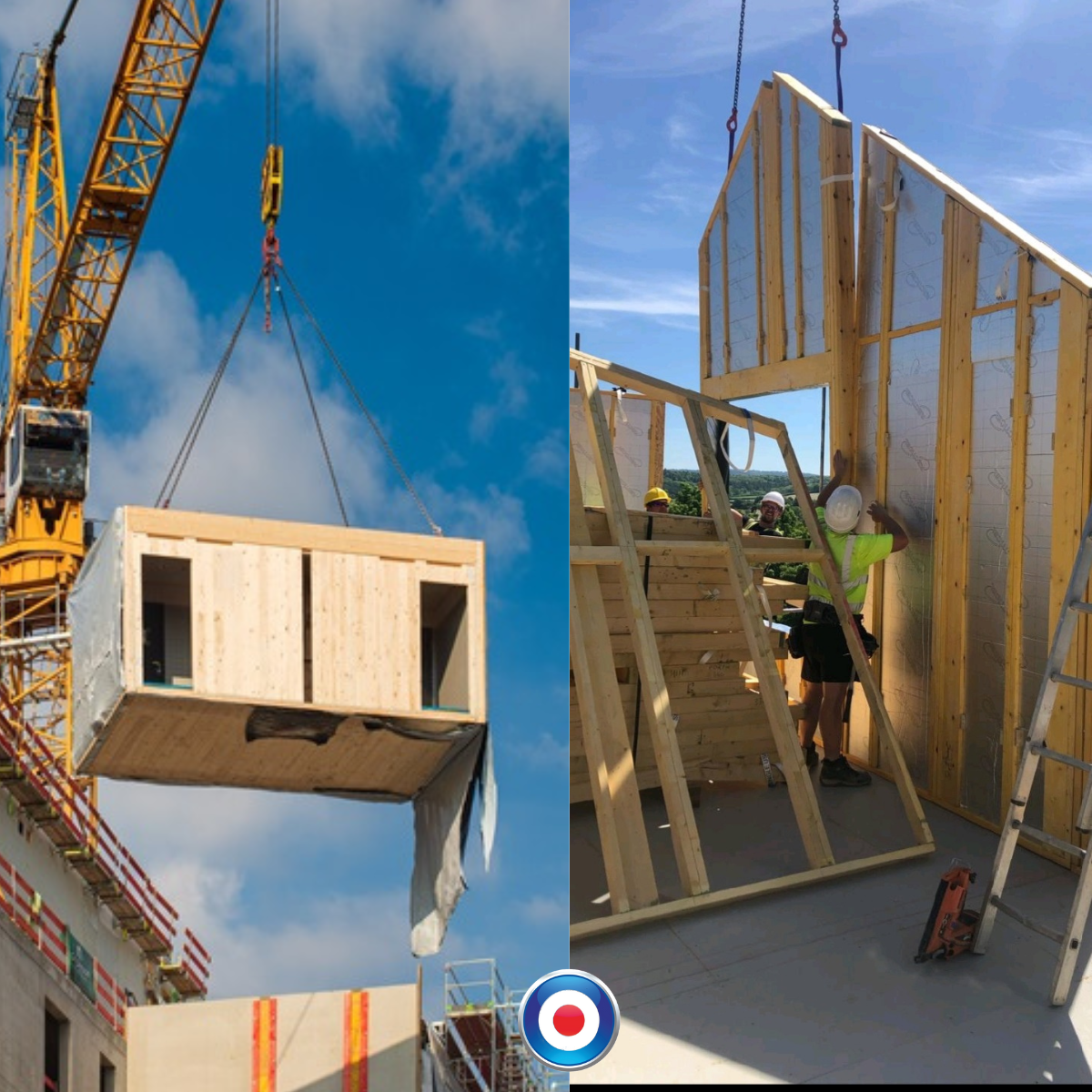What is the difference between prefabricated and modular construction?
The increase in demand for timber frames as a sustainable material for housebuilding and commercial property development is driving increasing numbers of self-builders and traditional masonry builders to learn more about the types of offsite construction.
As a manufacturer of prefabricated timber frame systems, we’re often asked whether prefabricated construction is the same as modular construction.
The short answer is no, they are different. But they are similar in that they are equally time and cost-efficient and both types are produced off-site.
Modular Construction
As its name suggests, modular simply means modules. Modular construction is a method of offsite construction where modules of a fixed size are made.
They are often used to build a structure made up of identical-sized rooms that can be configured to fit together in a row or on top of one another, forming a block of rooms or small apartments. They are also used for building extensions, modular cabins or garden rooms.
Each module is fully fabricated in a factory-controlled setting, complete with floor, ceiling, walls and customised fixtures and fittings – a kind of plug-and-go space.
Modular construction can be very efficient in terms of speed of build, but they do take longer to fabricate than a timber frame system and each module will need to be transported separately to the site.
Prefabricated Construction
The prefabricated construction method is the production of the complete structural framework of a house or building which is designed to specification, again in factory-controlled conditions. All of the parts are transported together and assembled on-site.
The parts include the floors, pre-insulated wall panels, roof trusses and all of the required fixings.
Prefabricated construction is more typically used for houses and all types of commercial buildings.
This type of construction method is very cost-efficient – the components of a large house can be prefabricated in just a couple of months and erected on site in days.
The key differences between prefabricated and modular construction
Modules are fully completed off-site ready to use or ready and to assemble with other modules of the same size.
Prefabricated means the production of the structural framework that is then taken to site and constructed.
Transportation of prefabricated components is easier and quicker because they are smaller and lighter. Whereas modular units are large, heavy and often require special lifting equipment for both transportation and on-site assembly.
Both types of offsite construction have many advantages because they are made in factories with quality-controlled processes. They also help to reduce costs, reduce waste, reduce the need for on-site labour and prevent delays.
Target’s timber frame experts can give you all of the advice you need about both prefabricated construction and modular construction so please don’t hesitate to get in touch.
Related articles
Advantages of working directly with a timber frame manufacturer
A Guide to choosing a timber frame manufacturer


